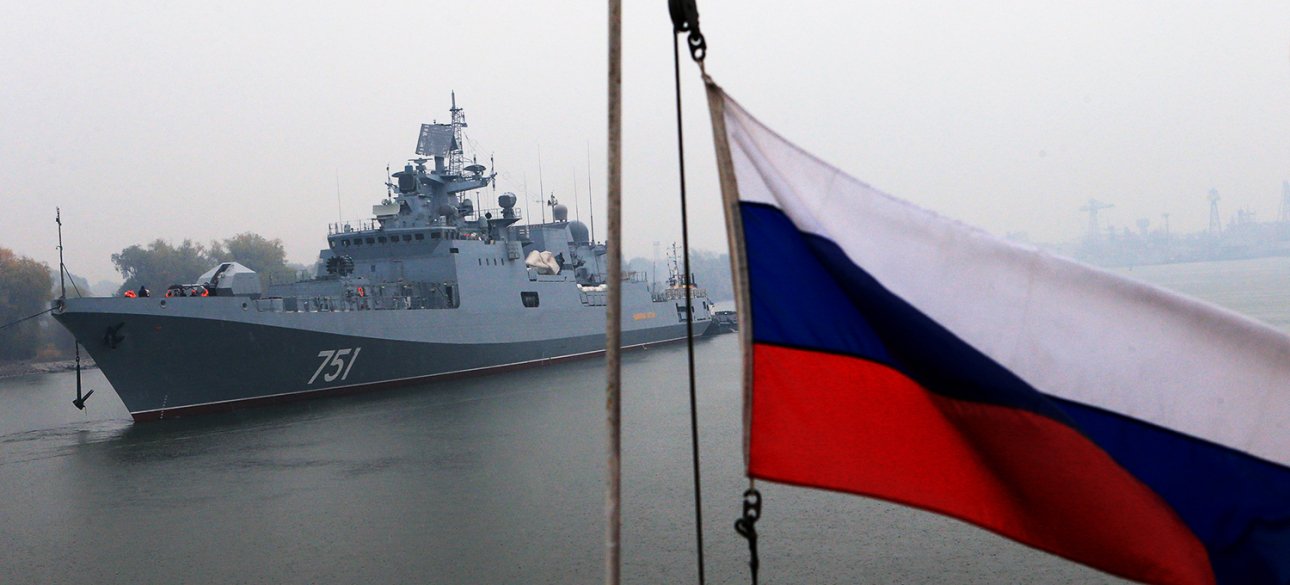
On paper, this is two warships more than the world's leading fleet - the US Navy - plans to accept this year. But in practice, the estimated turning point for the construction of warships in Russia is closer to the decline. The new Russian ships are small and lightly armed - and are filled with potentially unreliable equipment, in particular, marine engines that Russia had previously imported from Ukraine, but now collects it on its own.
Worse, Russian shipbuilding barely has time for the loss of Russian ships in Russia's 28-month war with Ukraine. Ukrainian missiles and drones reduce the tonnage of the Russian Navy at almost the same rate at which Russia can increase it. There are several ways to compare the naval forces. One of them is to calculate individual ocean ships, regardless of the size and what weapons they carry. Another option is to calculate how many rockets can in general carry a fleet.
The third is to calculate the tonnage, that is, how many tons of water displaces the fleet. Tonnage is a useful indicator, since larger ships are usually more survivors and more heavily armed than potentially smaller smaller warships. That is why, despite the fact that the Chinese fleet has more corps than the US Navy - 350 Chinese warships against 290 US - the US Navy is still a more powerful fleet. The US Fleet is 8. 2 million tonnes and the China fleet is 3. 2 million tons.
Not surprisingly, this predominant tonnage also leads to heavier weapons. US warships have about 9,900 missile launchers, Chinese - only 4,200, and Russian - 3000 or so. Equally devastating for Moscow is that the tonnage of the US and China's naval forces is steadily growing as new larger ships are replaced by old smaller ships. But the Russian fleet is moving in the opposite direction. The new smaller ships are replaced by old large.
During the Cold War, the Russian Navy was a real naval fleet with ambitions on the placement of surface ships and submarines around the world. A number of surface ships included massive linear cruisers, as well as destroyers, frigates and even aircraft carriers. But the Soviet surface shipbuilding industry fell together with the Soviet Union - and never recovered.
The largest ships in Russia - several linear cruisers, ordinary cruisers and destroyers and one old aircraft carrier - are the remains of Soviet power. And one of these residues, the Moscow cruiser, was sunk for Ukrainian anti -ship missiles in 2022. The Russian industry still manages to build a large number of large submarines.
But the new Russian surface vessels are usually patrol ships, corvettes and frigates of the watertone, which is no more than a third of the size of one of the 70 or so destroyers of the Arley Berk class. Moscow's naval ambitions decreased with its ships. The Russian fleet is becoming more and more coastal. The main reason for the constant reduction of the number of individual Russian ships and the Russian naval strategy is marine engines.
The Russian industry is trying hard to create sufficient size and reliability engines to move something more than the frigate. By 2022, Russia imported most of its marine engines from Ukraine. Russian warships are so unreliable that it is necessary to keep a huge fleet of ocean tugboats, the task of which includes towing warships whose engines fail during deployment. The Navy tow Navy has a watertone of about 150,000 tons, which exceeds the entire Canada fleet.
So, this year, the Russian fleet should receive a dozen new warships. Four of them are submarines, but most of the others are corvettes. Given that this year, Ukrainians have destroyed at least three surface ships of the Black Sea Fleet of Russia - two Corvets and a landing ship - it is possible that the growth of the Russian Navy tonnage will be insignificant this year, if not almost unchanged.










All rights reserved IN-Ukraine.info - 2022